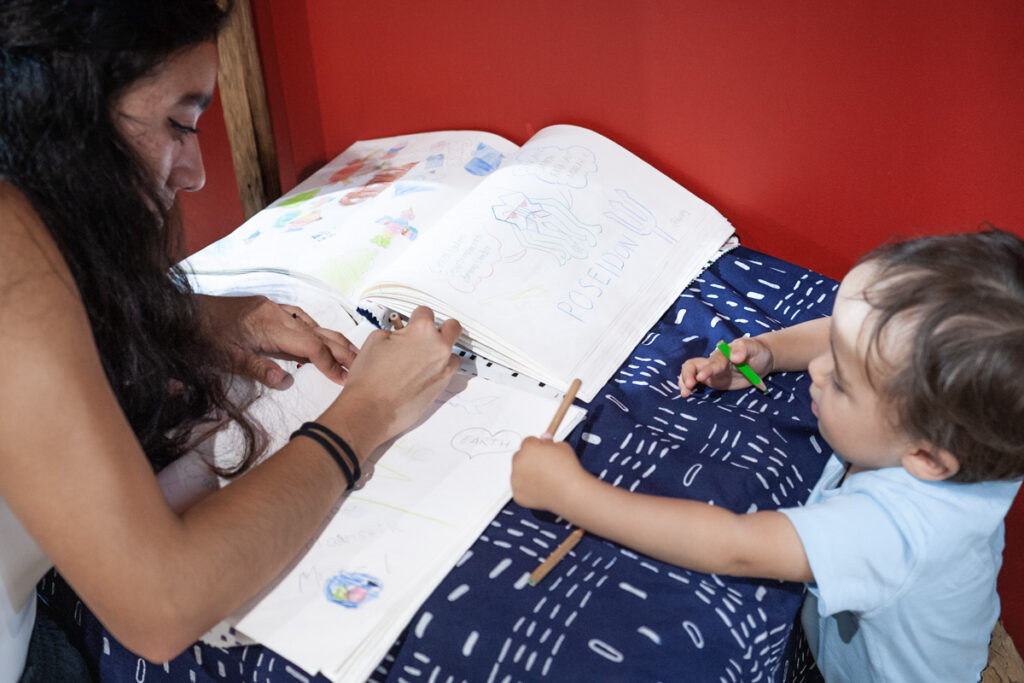It’s summer holiday and we’ve just arrived in Indonesia. We’re on our way to Labuan Bajo in the eastern archipelago, but we’ve decided to spend a few days in the capital to beat the jetlag. I’m not too fond of the bustling and congested megacities of the Far East, but Jakarta is the hometown of my wife and a good reminder that life is not always as comfortable and peaceful as in Geneva. This time though, the reminder is a little starker than usual.

The Big Durian has just been hit by a massive power failure, with big parts of the city completely blacked out, paralyzing the traffic and forcing buildings to run on back-up generators. As we enter a mall to buy some necessities for the kids, Twitter tells Sari that “the blackout has affected some 30 million people in Greater Jakarta” and that the “recently established metro system was evacuated this morning.” Should we be worried? I’m not sure.
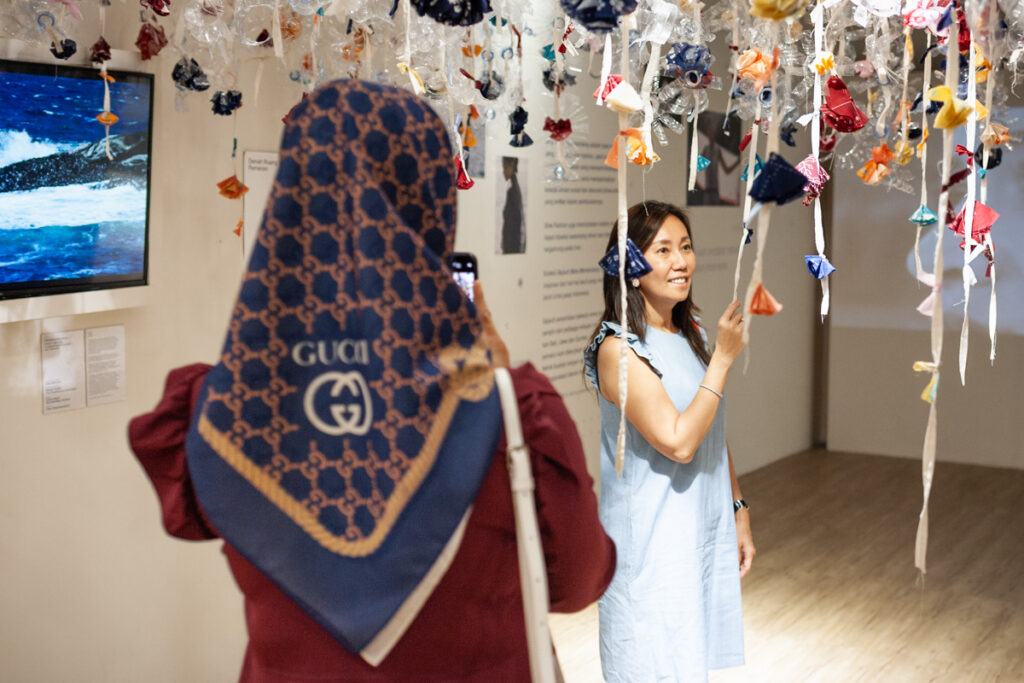
As we venture deeper into the mall, a rather odd-looking installation catches our attention. Squeezed between Guccis and Pradas is a little shop, with its ceiling covered in odd-looking, colorful and sparkly stripes. At a closer inspection, we learn that the stripes are made of plastic waste recovered from the Indian Ocean, and that the shop is the entrance to an exhibition. How exciting!
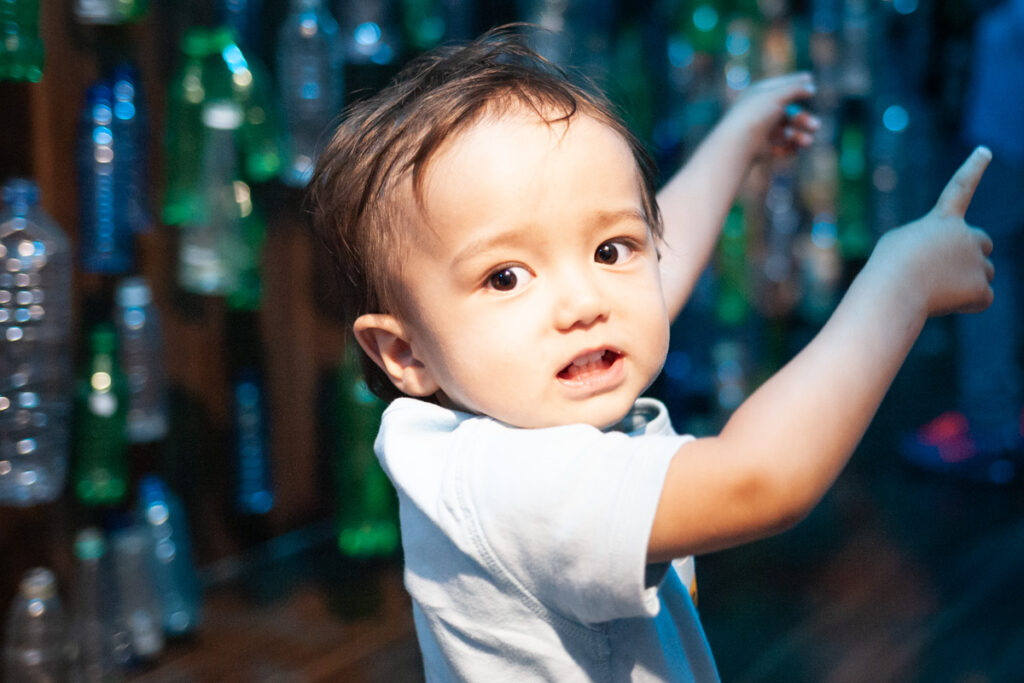
Benji finds the installation amusing. He pulls and rattles the plastic bottles, treating them like an instrument. Josi looks rather concerned and tries to curb her little brother’s enthusiasm. I take a few photos. The ocean-like glittering caused by cold light meeting plastic translucence reminds me of a dive in Bali. Just after rolling off the boat, we found ourselves looking up at a surface covered by a thick layer of plastic bags and trash, probably dumped by a nearby boat. At the time, we didn’t do anything about it. Today, I feel embarrassed.
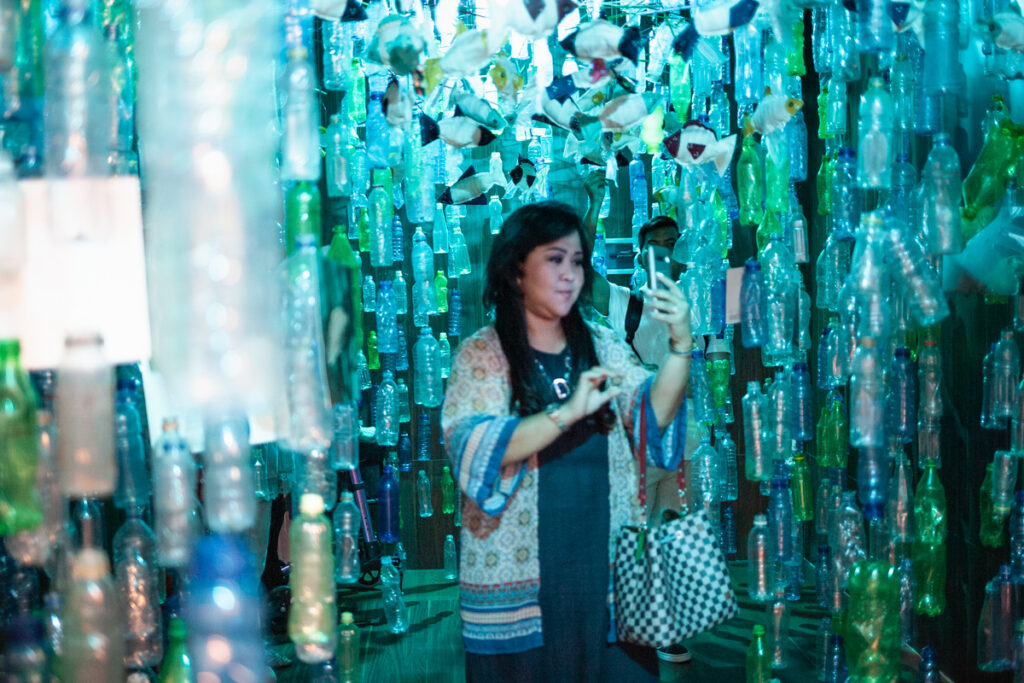
“Laut Kita” (“Our Ocean”) is an installation by Sejauh, an Indonesian fashion brand, attempting to educate the general public about the importance of reducing the use of disposable plastics and protecting the environment. The curator has juxtaposed images of Indonesia’s coastal beauty with stacks of plastic waste and recyclable bottles installed to mimic a kelp forest. “Indonesia is the second largest plastic waste producer with a total of 3.2 million tons per year,” Sari reads on the info board. “About 40% ends up in rivers and the ocean.” Ugh.

At the end of the installation, a group of kids has stopped in front of sign posts equipped with catchy slogans and data on how plastic pollution is destroying the ocean. I wonder what they think. Are they contemplating how to save the world, or are they just appalled by the extent to which their parents and friends have lived their lives at the expense of the environment? Perhaps a bit of both. I don’t dare to ask. As we leave, Josi writes a note about sharks in the guest book and Benji adds some color. Proud papa moment.
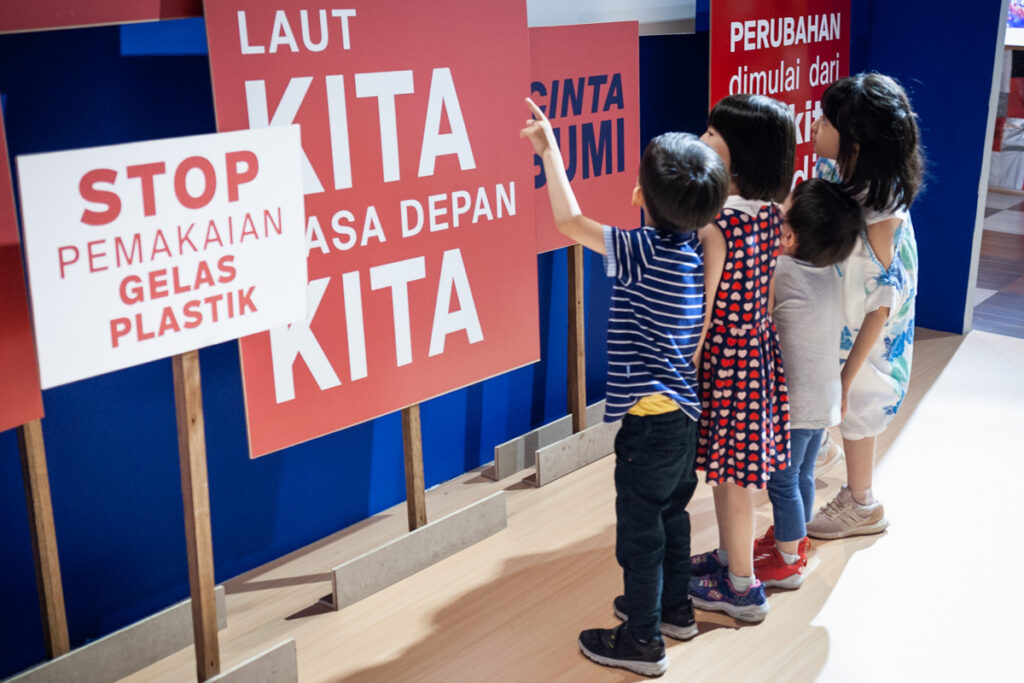
I didn’t expect that our trip to the mall would turn into a cognitive journey from consumerism to sustainable living. I’m glad it did. As the fluorescent lights of the mall continue to flicker and the ventilation system struggles to keep us cool, most shops and restaurants remain empty. The setting reminds me of a scene in Dawn of Dead, where people are looting the pharmacy for medicines, scavenging the supermarket for food and arming themselves in the hardware store. Let’s hope our current path of destruction won’t take us there. In the meantime, we can all do something to save the ocean. Why not start by recycling one plastic bottle at a time?
